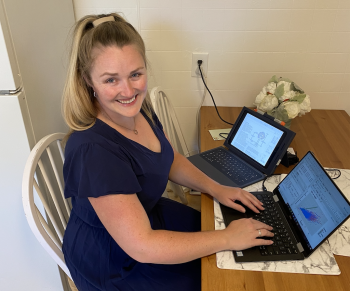
School:
Grade Level:
Teaching Position:
Supervisor:
Department:
Mentor:
Research Project Year:
Research Project Title:
Research Project Description:
Environmental modeling is a research field that is immensely useful especially for the issues our world faces today. Droughts, forest fires, and increased levels of carbon dioxide are just a few of the changes that are affecting planet Earth. During my lab experience, I worked with an ecohydrological modeler. The lab project attempts to use the scientific understanding of carbon sequestration in forested environments to create mathematical models to predict how different climate disturbances could affect the forests of the world. Specifically the project is trying to answer the question of how we can compare common forest metrics like height, diameter at breast height, and crown cover against model simulations of various carbon pools like stem carbon. Furthermore the project is trying to predict how carbon sequestration of trees changes with age and how this can help us understand ways to combat increasing carbon dioxide levels in the atmosphere. My specific project focused on using allometric equations to better understand how height and diameter at breast height of different genera of trees are related to each other using field measurements and modeling tools.
Curriculum Project Year:
Curriculum Project Title:
Curriculum Project Description:
This is a series of lessons and activities for the high school biology classroom with the theme of exploring how microscopic biological processes can have a global impact, especially in aspects of climate change. In an introduction to photosynthesis, students explore "why oxygen matters" in an online activity. Students are introduced to the idea that environmental factors have an impact on photosynthesis. After this basic lesson students use Algae Beads in an indicator solution to see photosynthesis and respiration in a test tube. This hands-on lab also connects the energy cycle to the carbon cycle, along with providing an opportunity to research algae. This allows students to see the impact a photosynthetic organism can have on an ecosystem. Finally, students will plan and create their own mini "ecosystem in a bottle" - not only modeling an ecosystem but creating one. The final synthesis will connect the microscopic to the macroscopic and have students critically think about the ecosystems of the globe.
